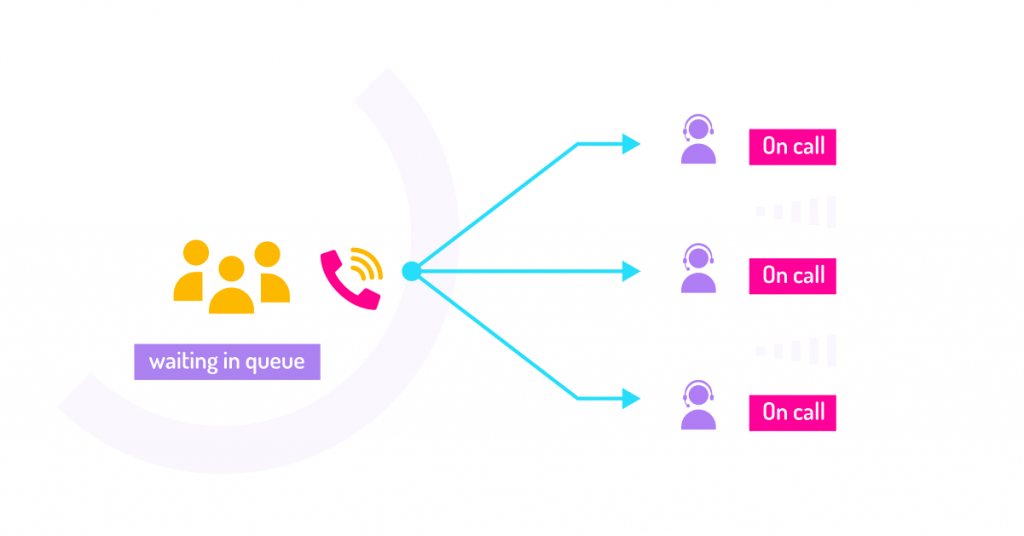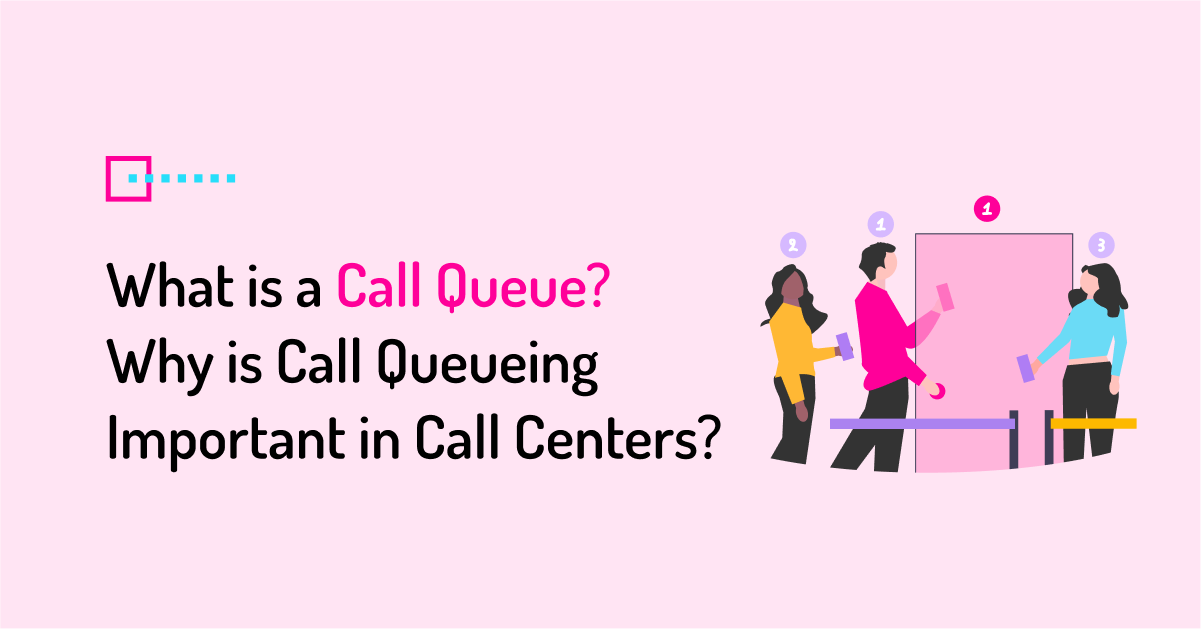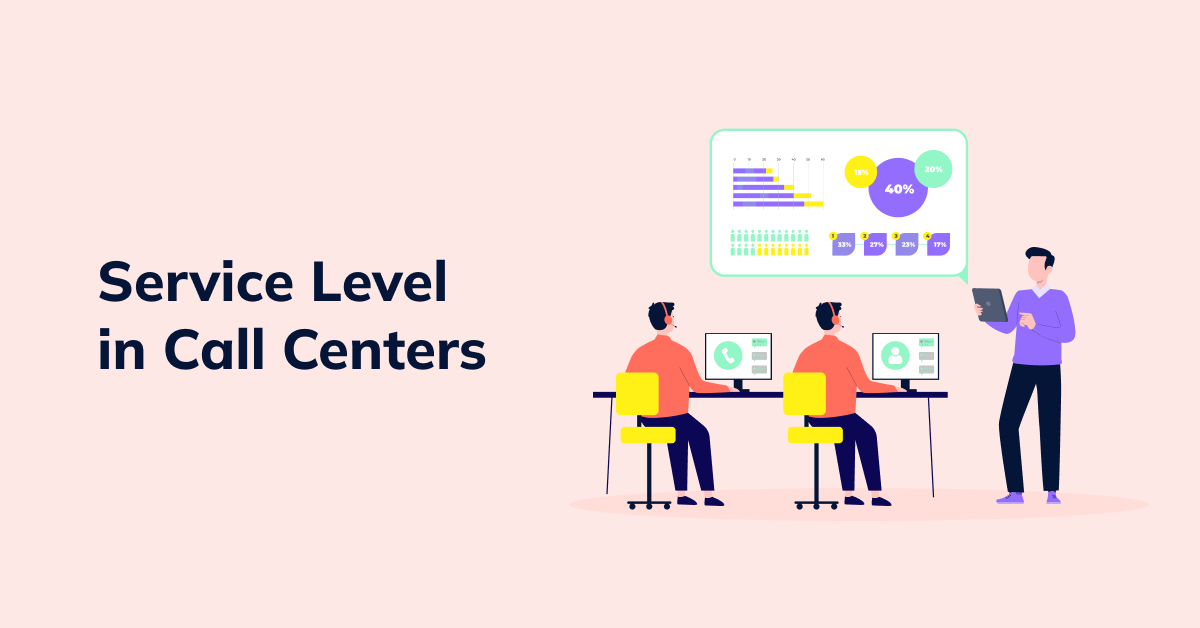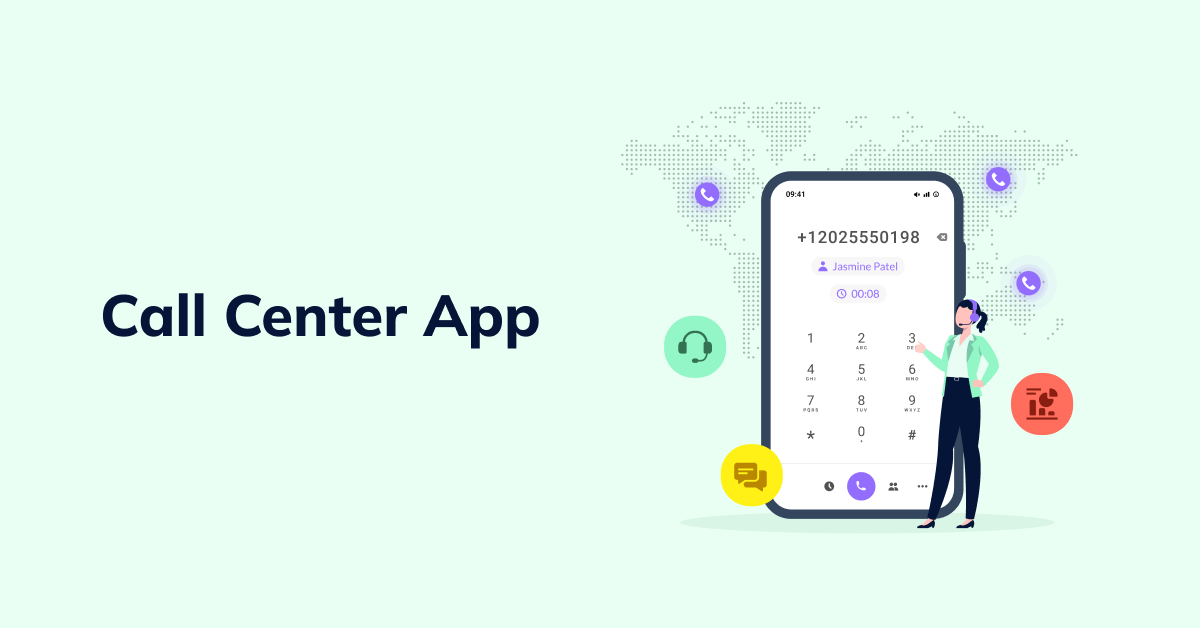Along with call routing, call queuing makes it easier for call centers to manage high inbound call volumes by reducing wait times for callers and ensuring they are connected to the most appropriate agents. While receiving multiple simultaneous phone calls to a single number is a common situation in inbound call centers, queues allow managing these calls logically, quickly, and efficiently. That results in fewer dropped calls, enhanced customer support, and improved customer satisfaction.
What is a Call Queue?
Whenever customers or prospects reach out to a call center, their call is usually accepted by a call center agent who is currently available. In most cases, however, the number of incoming calls a typical inbound call center receives significantly exceeds the number of available customer service representatives. This is where call queueing becomes essential. A call queue is a virtual waiting line for inbound callers, where they are placed on hold until an agent becomes available to pick up their call.
How Does Call Queuing Work?
Inbound calls are routed by the automatic call distribution (ACD) system and placed in a queue by call queuing software, which is typically part of a complex call center software solution. Based on predefined rules and customer data, such as caller ID, time and geographical location of the caller, type and complexity of the issue, agent skillset, etc. – the queuing system assigns each incoming call to the corresponding call queue.

Those who called in earlier are placed higher in the call order. While waiting in the queue, callers commonly hear pre-recorded messages and music playing in the background. Depending on the call queuing system settings, customers may be informed of their number in the queue and the approximate time left until the call gets picked up by a rep. Callers may also be given the option to request a callback if the waiting time is too long.
The Role of Call Queue in a Call Center
- Better management of high call volumes
Many call centers regularly experience higher call volumes during certain periods, such as the holiday season, when running promotions and sales, on weekends, or even during peak hours throughout the day. Paired with call routing, call queue management features enable call centers to manage high call volumes in a more efficient and organized way, with the available resources. It means they can effectively handle periods of heavy call volumes with no need to recruit additional agents. - Improved agent productivity and efficiency
A properly optimized and well-managed call queue process ensures that agents are dealing with customer inquiries, appropriate to their skills, knowledge, and expertise. This way, agents won’t have to transfer calls to other reps and can spend more time resolving relevant issues. It can add up to their efficiency and productivity and positively impact overall employee satisfaction. - Increased customer satisfaction levels
With a robust queue management strategy, call centers can minimize wait times for callers, decrease average call handling times, and improve FCR rates. That ultimately results in increased customer satisfaction and customer loyalty. IVR systems can additionally ensure that calls are directed to the relevant queues based on customer-provided input. It means each call will be answered by the most appropriate agent, who is best suited to serve their needs – and callers won’t end up frustrated by being routed to someone who lacks the skills or expertise to resolve their issue.
How Can You Use a Call Queue in Your Contact Center?
Having long queues and an increased number of incoming calls is likely to indicate steady business growth. However, when callers have to wait in queues for longer than usual, that can cause more abandoned calls, decreased customer satisfaction, and poorer customer experience.
Though eliminating call queues is almost impossible, managing incoming calls efficiently requires having a solid call queue management strategy. With call queueing and the right call center software, your contact center can handle inbound calls quickly and efficiently.
What Causes Long Call Queues and Long Wait Times?
Long call queues and wait times may be caused by various reasons, such as using outdated call center software tools, poor agent training, allocation, and workforce management, understaffed departments, and lack of customer self-service capabilities and contextual customer information.
Outdated call center software
Agents may be challenged with managing call queues effectively if they have to deal with outdated call center technology that lacks fundamental call management features like advanced call routing options and queue analytics or other critical features. For example, a lack of CRM integration means that agents might have to place callers on hold while switching between systems to get customer data, call history, or details on previous interactions. That may lead to extended queue processing and longer wait times for callers.
Insufficient or poorly trained staff
Unexpected peak call volumes may result in long calling queues if a call center is understaffed. It’s important to anticipate call spikes and adjust the staffing accordingly to ensure there are enough agents to handle calls quickly. Otherwise, callers may be frustrated at their inability to get through to an agent, which means more angry customers and more stressful interactions for agents. Having poorly trained or unskilled agents is also a common reason for longer queues and extended call handling times.
Lack of self-service options
Long calling queues can be caused by a lack of self-service options available to customers. In addition to Interactive Voice Response (IVR) systems, customer self-service offerings may include chatbots, explanatory videos and tutorials, and instant access to online knowledge base resources. With comprehensive self-service tools customers can easily access, they can solve at least simple issues on their own, without having to call customer support. It can significantly reduce overall call volume and call queues.
How To Improve Call Queue Management
- Optimize your call routing strategy
Try and test multiple call routing methods to work out the strategy that works best for your call center. Different call routing options can be used for different departments and adjusted based on current call volume, agent schedules, and other factors. Effective routing strategies (such as skill-based routing) help improve FCR rates, decrease the number of repeat calls, and shorten call queues. - Utilize Interactive Voice Response (IVR)
By creating a well-thought-out IVR flow and letting customers get answers to their questions and handle basic issues on their own without needing to connect to a live agent, you can significantly decrease the number of incoming calls and reduce call queues in your call center. - Make use of pre-recorded messages
Queue management can also be optimized by using pre-recorded personalized messages that callers will hear while in a queue. These can be greetings or messages that inform callers of the call center’s hours of operation, estimated wait time in a queue or provide other relevant information. That helps manage customer expectations and reduce dropped calls. - Enable callbacks and virtual queues
Call centers can better manage call queues by enabling callbacks and virtual queues. Instead of having to wait on hold for a long time, customers can request a callback and be contacted by an agent later, at their preferred time. With virtual queues, a customer will get a callback as soon as an agent becomes available. - Keep track of call queue analytics
By consistently tracking real-time and historical call queue metrics with call center reporting and analytics tools, managers can get valuable insights helping them make more data-driven decisions and manage call queues and overall call center operations more efficiently.
Call queue FAQs
How can your team benefit from call queueing?
Call queueing is a critical feature of today’s call center and contact center solutions. When properly set up, it can help your team handle high call volume more efficiently and better manage customer expectations. It can also help reduce the number of abandoned calls and improve first call resolution rates, customer satisfaction, and the overall customer service experience.
What is the difference between a ring group and a call queue?
Both call queues and ring groups are call center software features to connect callers to agents as quickly and seamlessly as possible. With call queues, inbound calls are placed on hold until an available rep picks up the call, with calls answered in the order they were received. In a ring group, incoming calls are directed to a set of agents, and they ring all phones simultaneously. Call queueing is a more customizable and powerful feature.
What is the difference between a call queue and an auto attendant?
In a call queue, inbound calls are placed on hold in a virtual line until an available agent picks up the call. An auto attendant is a virtual receptionist that provides a series of voice prompts or menu options to route incoming calls to the appropriate extension or department.



